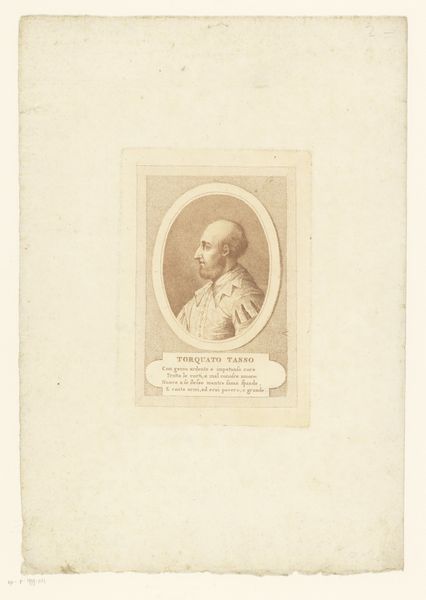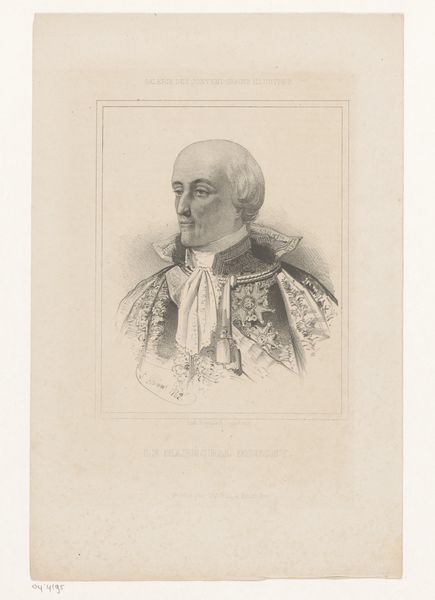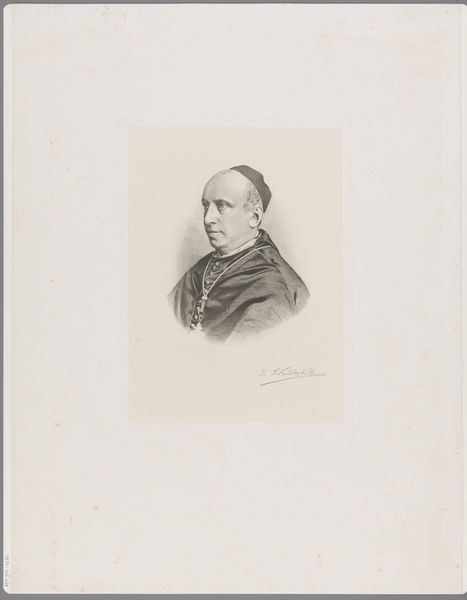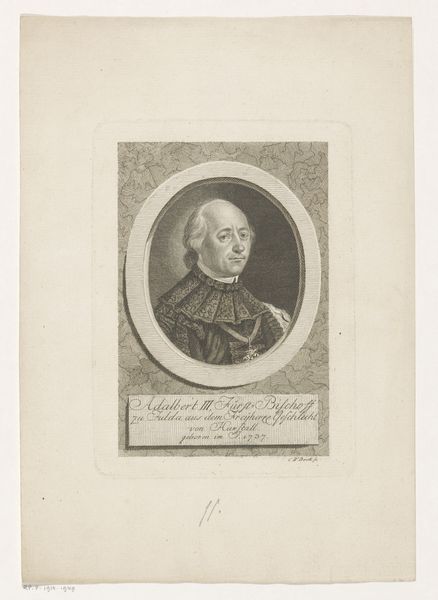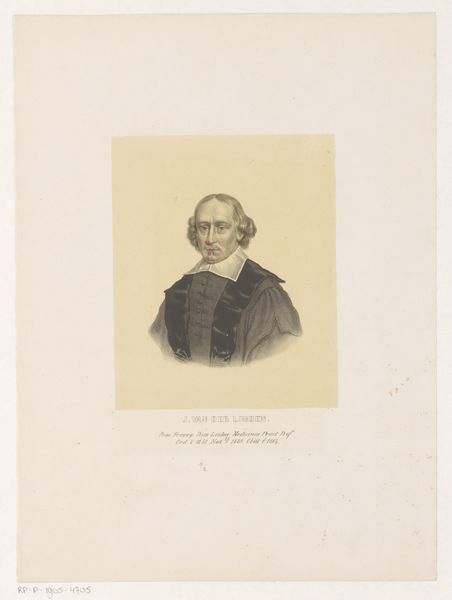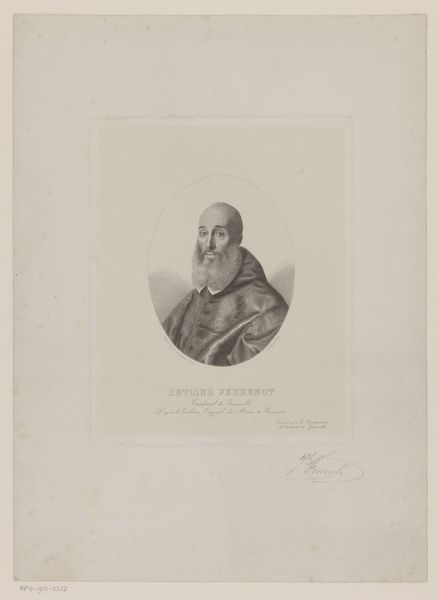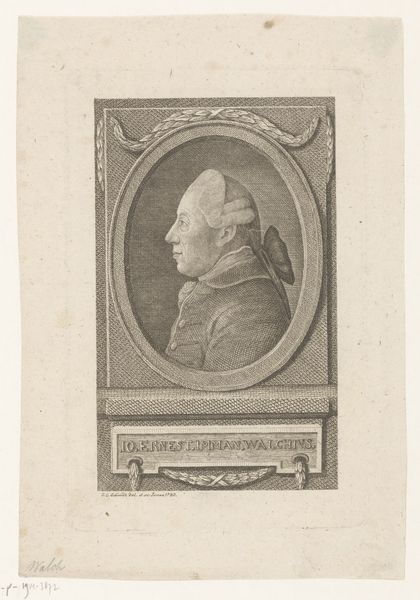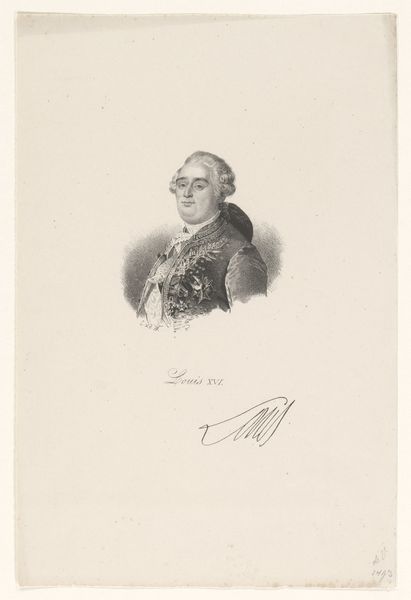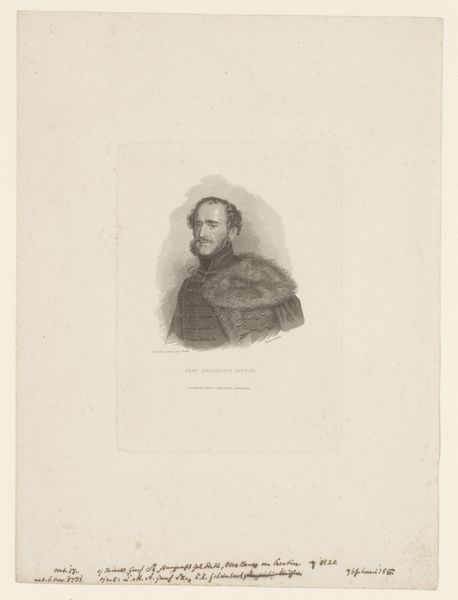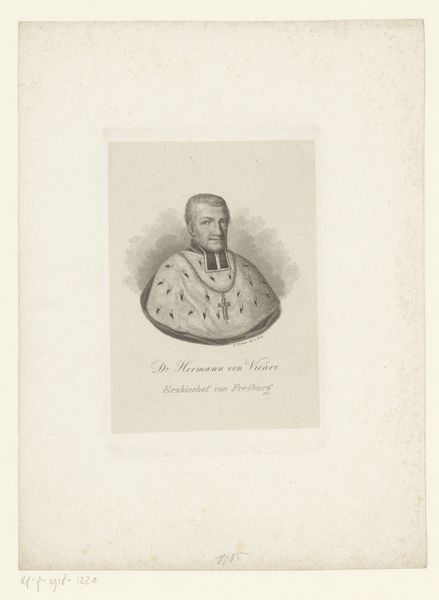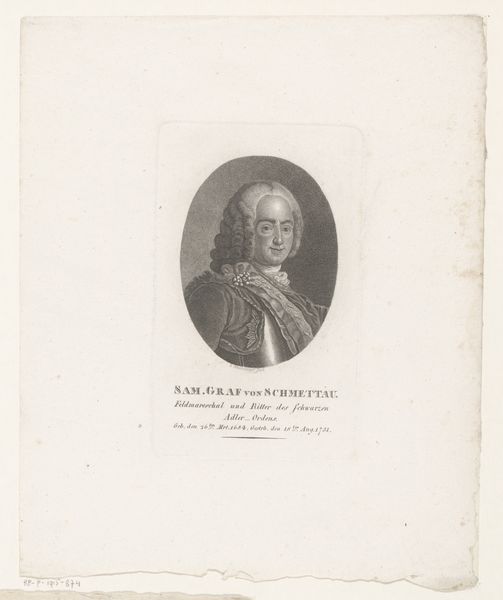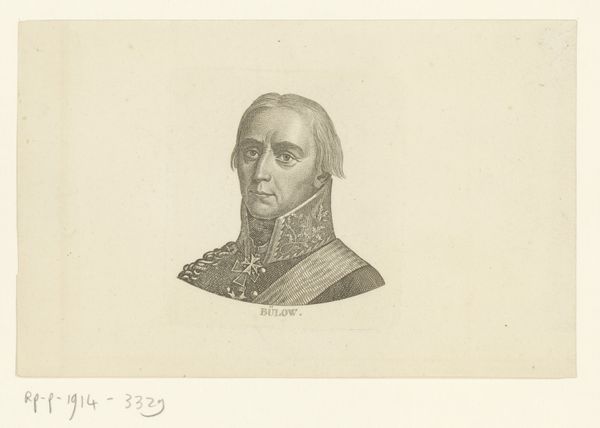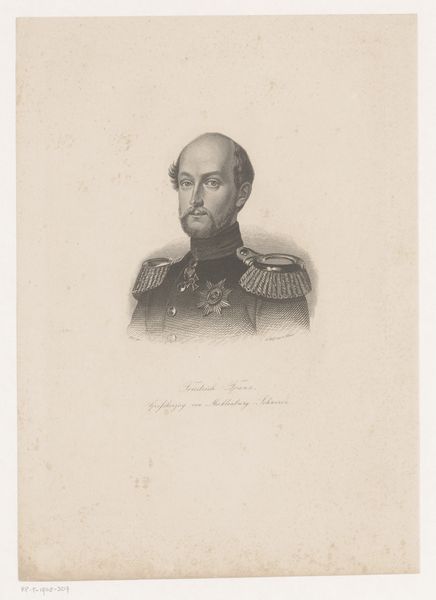
drawing, engraving
#
portrait
#
drawing
#
neoclacissism
#
engraving
#
realism
Dimensions: height 107 mm, width 91 mm
Copyright: Rijks Museum: Open Domain
Curator: Here we have a rather distinguished portrait of Adolf Frederick, Duke of Cambridge. Ernst Ludwig Riepenhausen rendered this image sometime between 1775 and 1840, likely as a preparatory drawing for an engraving. Editor: The most immediate thing that strikes me is how meticulously the detail is captured, it has an air of gravitas, doesn't it? I find the symbols and trappings of royalty here almost scream their presence. Curator: Well, considering Adolf Frederick's position, such a presentation isn't surprising. Portraits like these served to project an image of power and authority but were part of political machinations as well. Think of how this image, disseminated via engraving, would reach wider audiences across territories. Editor: You can clearly see those social mechanics at play. Beyond his clothing, laden with decorations, his very pose denotes status. It also calls to mind recurring tropes, those semiotic visual structures through which power traditionally manifested, such as the furs slung across his shoulders. Curator: Precisely! Furs were often signifiers of wealth and nobility, deeply rooted in Western visual culture, marking class status within social hierarchies. One may consider that this iconography subtly yet emphatically reinforced his authority and that of his lineage within broader society. Editor: Those repeated visual cues worked at every level, from court to commoner, subtly asserting claims of power and legitimacy. We could perhaps interpret that steely, forward-facing gaze, not just as realism, but as a visual strategy to project an ideal, a leader both commanding and wise. It would have reinforced public perception of his qualities as a ruler. Curator: Right! Beyond just accuracy, such pieces played an integral role in shaping and controlling public opinion, making these depictions crucial tools for cementing rulers in public and historical memory. Editor: Considering all those implications, suddenly this image seems to contain volumes within it! I now appreciate how deeply connected seemingly simple portraiture can be with the larger cultural narratives and displays of power.
Comments
No comments
Be the first to comment and join the conversation on the ultimate creative platform.
